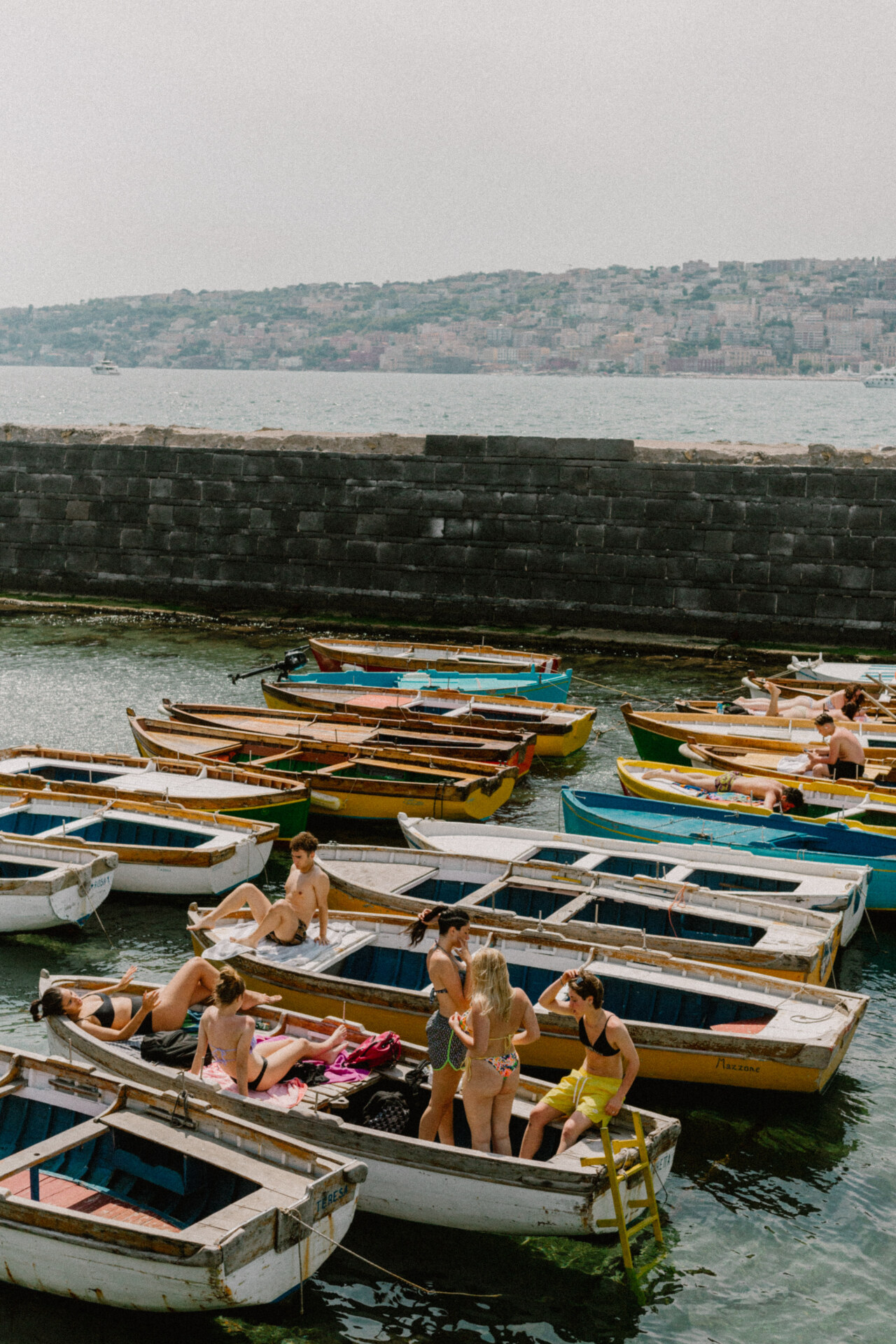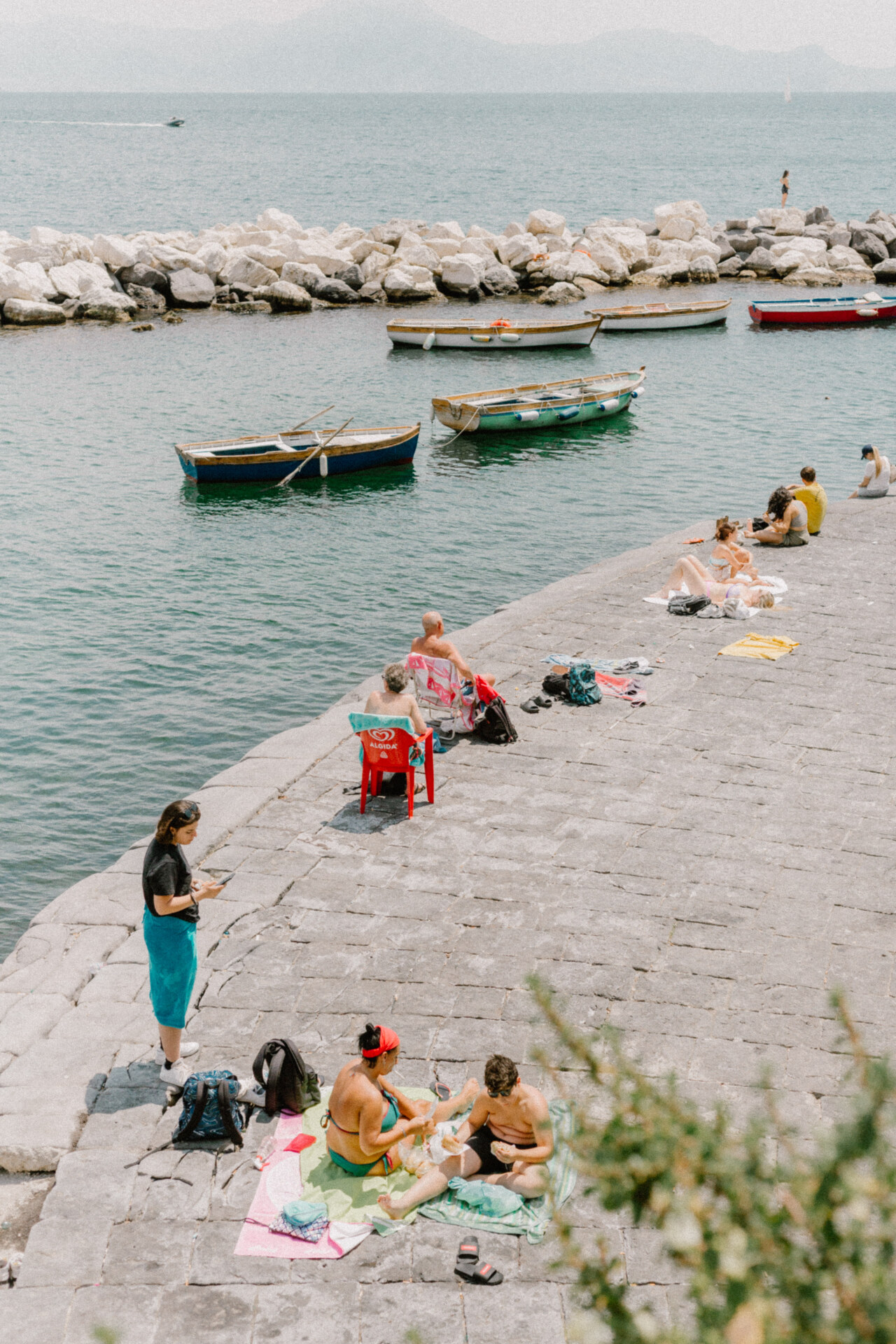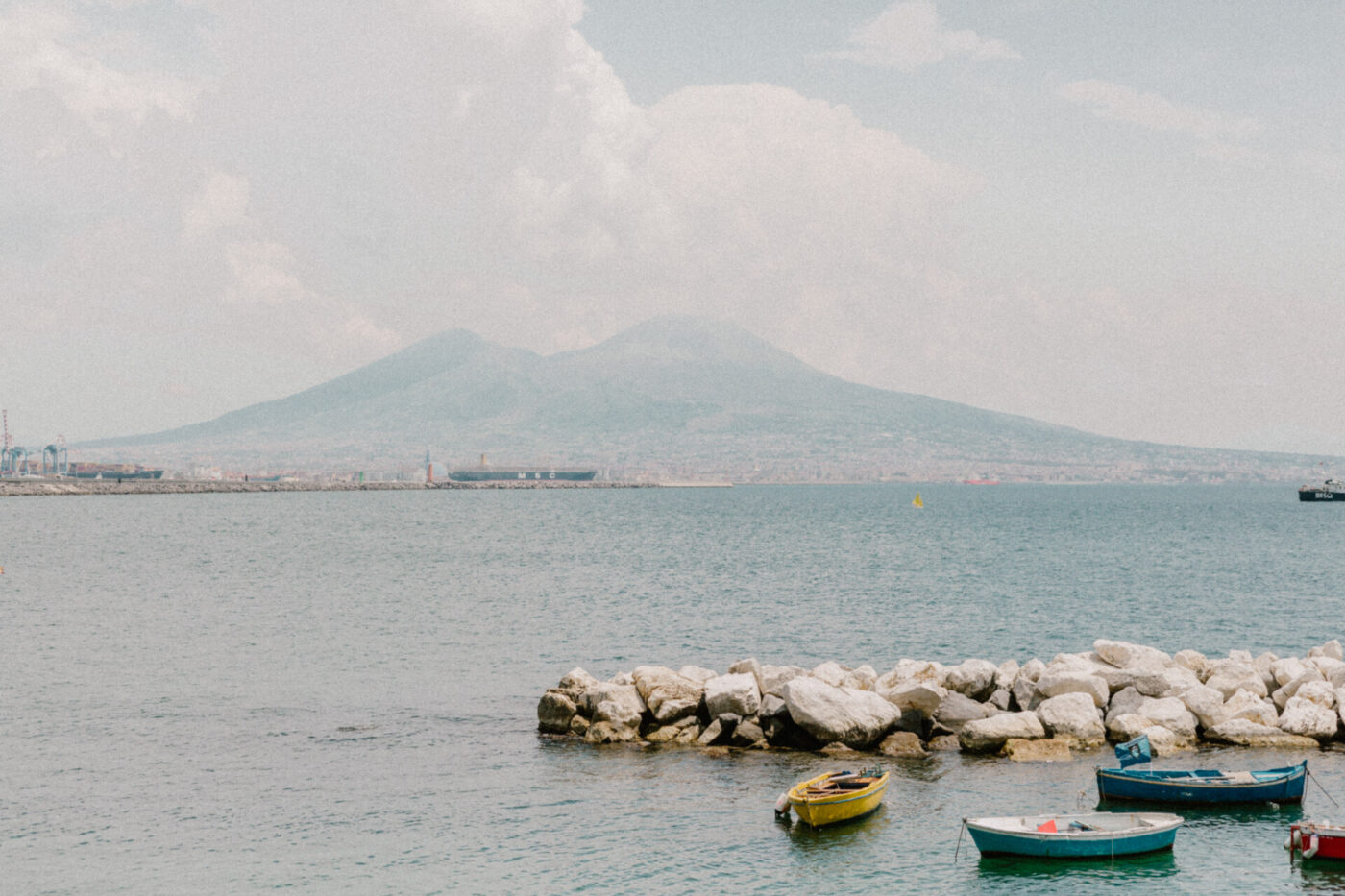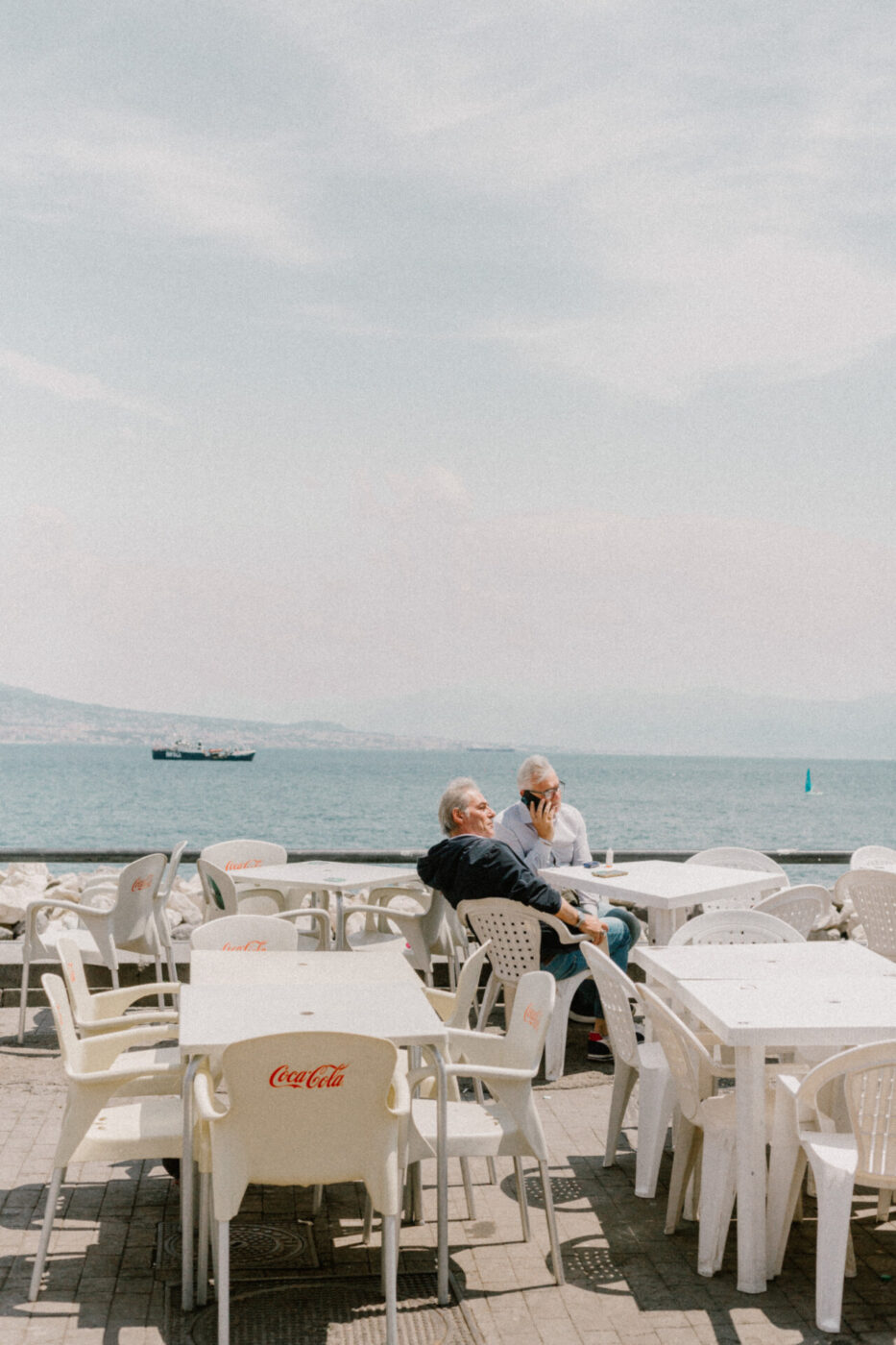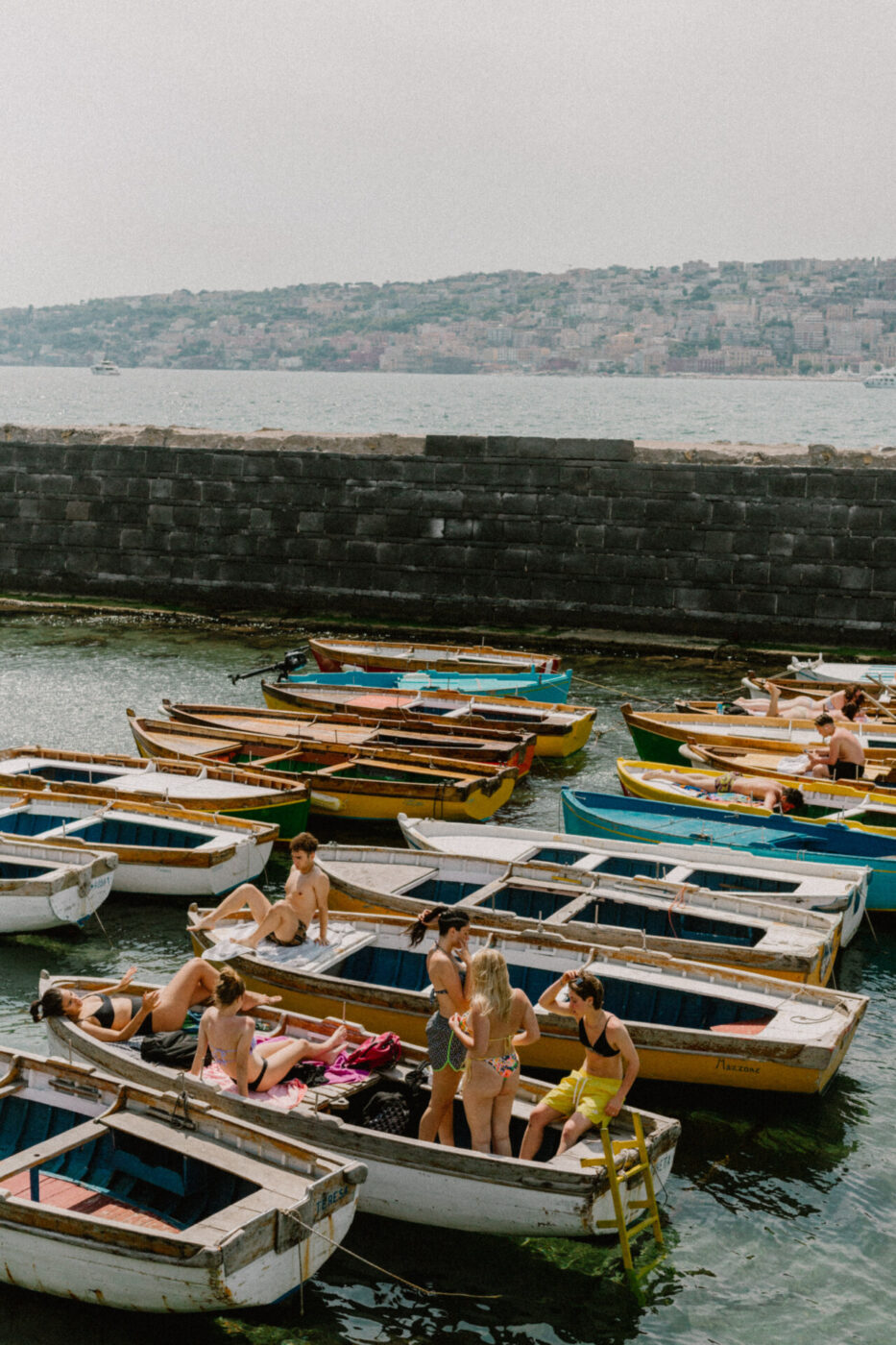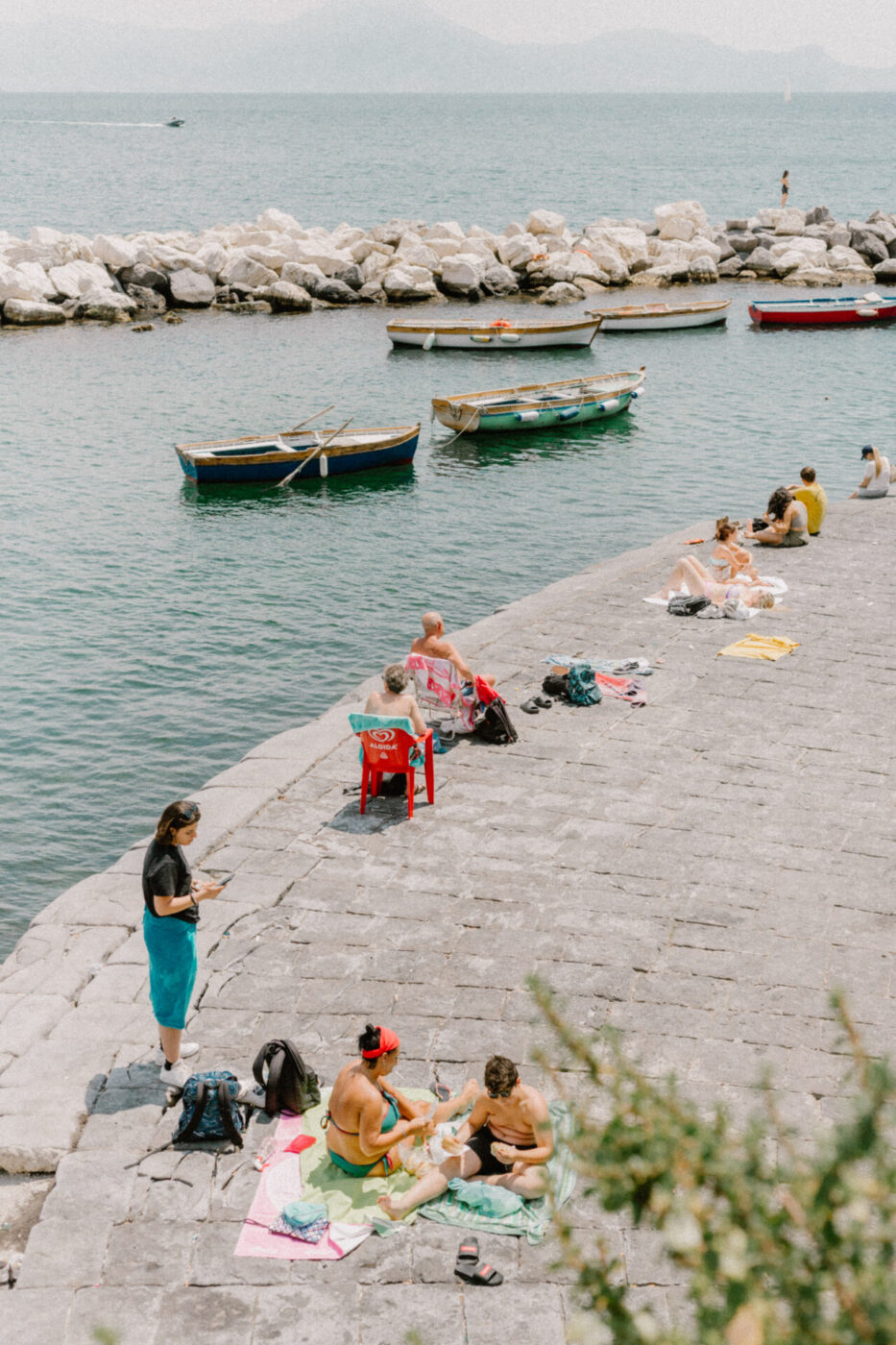In Naples, there are only two seasons: winter and ‘a staggione. Here, we do not call the sunny season “summer”, but ‘a staggione, literally translatable to “the season”–apt, considering summer is the season that fits the city like a glove. Here, ‘a staggione doesn’t begin on the solstice like everywhere else, but with the year’s first swim, the year’s first lick of an icy granita, the year’s first hot sleepless night. Here, ‘a staggione feels like sunburns that fade into tans, dips in secret coves just steps from urban bustle, the freshest raw fish, l’ammuina at the seafront, and an attitude as carefree and sun-kissed as the season.
I didn’t experience this Neapolitan summer growing up: in Gargano, Puglia, I could only imagine what it was like, reading books by Elsa Morante, Benedetto Croce, and Raffaele La Capria to fuel my summertime dreams. But, when I moved to the city to study, I welcomed ‘a staggione before the snow had even melted in my village. I took long, warm, early morning walks along the salty seafront as my mom sent me photos of our still-white-capped house. I rejoiced because I had finally been spared that torture, replacing the cold with the sweet, sweaty suffering of a Neapolitan July.
I wish ‘a staggione could be captured and sold in bottles titled “sleepless nights in front of the fan”, “always-open windows in hopes of a breeze”, or “granita al limone for lunch and dinner”; since it can’t, I collected stories of ‘a staggione from people born and raised in Naples, sharing here their months-long summers powered by percoche, passeggiate, and plenty of the sea.

Photography by Gina Spinelli
Alessandra shares, “Growing up, I had a friend who lived in Posillipo [one of the richest neighbourhoods in the city]. In the early 2000s, if you wanted to swim there you had to have a house, since you couldn’t rent a canoe. Luckily, my friend’s house had a private staircase descending to the sea. We would spend whole days swimming below Capri and Vesuvius, ending the day with bonfires at Gaiola [one of the minor islands of Naples]: the night lit up with stars and the moon and with the waves just a stone’s throw away… I felt part of something big and wild, but simple.”
Ciro tells, “My family has been Neapolitans for generations. For me, ‘a staggione is carefree, inextricably linked to my family and the Mergellina beach. When my sister and I were young, my mother would finish work in the morning and take us to the beach; it was always just the three of us because my father worked until late in the evening. I remember we used to take the 140 bus from Santa Lucia, a neighbourhood facing the sea. After diving into the water all day, we played with a Super Santos and sat in plastic chairs bought from a kiosk for 1€. It was all we needed.”
Robbie’s story brought him to tears: “Summer coincided with the adrenaline rush of university exams. I spent the days studying, playing music, and listening to records in my bedroom. But there is one memory that moves me most of all: taking the Circumvesuviana train with my grandparents and going to Sorrento. There, with them, I could smell the scent of lilies. It’s still my favourite smell in the world because it reminds me of them. My grandparents were the best part of me. When I think of them and our summers together, my heart breaks. I miss them so much.”
Pasquale told of family and food: “For me, living on the outskirts of Naples, ‘a staggione meant making tomato sauce at home–‘e butteglie ‘e pummarola (bottles of tomato sauce, homemade) as we say here. We grow the tomatoes on our land and harvest them in mid-July, then the whole family gathers to carry on a tradition we cherish, especially my father. It’s a real ritual and memory we want to preserve: waking up at dawn, the earthy scent of cooked tomatoes, the sound of empty glass bottles, the patience and waiting, and then, finally, the first plate of spaghetti with fresh tomato sauce. The perfection of summer simplicity.”

Photography by Gina Spinelli
Anna’s and Mario’s summer memories are both connected to the percoca–a fruit somewhere between a peach and an apricot, but with a more intense flavour and colour. Anna says, “The symbol of a Neapolitan summer is wine with percoca. Why? First of all, because they are each great on their own, yet together are a remarkable combination. Second, because they represent an important facet of ‘Neapolitanity’, known by few (certainly not tourists). Third, because I link it to my partner: I am his percoca and he is the wine of my life.” Mario dovetails, “Wine with percoca is like Neapolitan sangria. It reminds me of my grandfather, who let me taste it for the first time as a treat on my fifth birthday. Surprisingly, it wasn’t the first time I had tried something alcoholic; my grandfather had already introduced me some time before by curing my toothache with whiskey and limoncello.”
Biagio shares, “Perhaps mine is a peculiar memory, but ‘a staggione for me means a sweaty back. My summers in Naples began when I was 15 years old. I would join friends in the city centre, taking the first train in the morning with a pack full of knick-knacks that almost always included a spare T-shirt. I suffered, and still do, a lot from the heat, so the 10-minute walk from home to the station would stain my shirt. Once inside the air conditioning of the carriages, the overheating would pass, the sweat would dry, and I would almost fall asleep, but, as soon as I stuck my nose out of the train, I would start sweating again. However, I didn’t go to the beach with friends; we preferred long walks, reminiscing on the winter that had slipped by so quickly, forgetting more important things from school and focusing on lovers. It was bittersweet, though; I never fell in love.”
Antonio had few words, but they speak volumes on the spirit of today’s Neapolitan summer: “There’s nothing better than sitting with your feet almost in the water, sipping a cool drink, nibbling on a sugna e pepe tarallo (lard and pepper tarallo), gazing up at Capri’s profile.”
Of course, these small stories are insufficient to honour the nuances of ‘a staggione, a concept that, like our city, we strive to define, but which, in reality, is an autonomous director of the lives of those within it.
While it’s true that part of my job is to create stories that do not exist, it’s also true that real stories are often the ones that move me the most. The privilege of shaping them to share with the world is one of the greatest fortunes a writer can aspire to. Naples is my home–the home I have chosen–and listening to the stories of those who were born and grew up there makes me love it even more and understand that, in the end, my choice to move was not decided by fate, but by pure instinct and an innate desire to be in the beauty of ‘a staggione.
